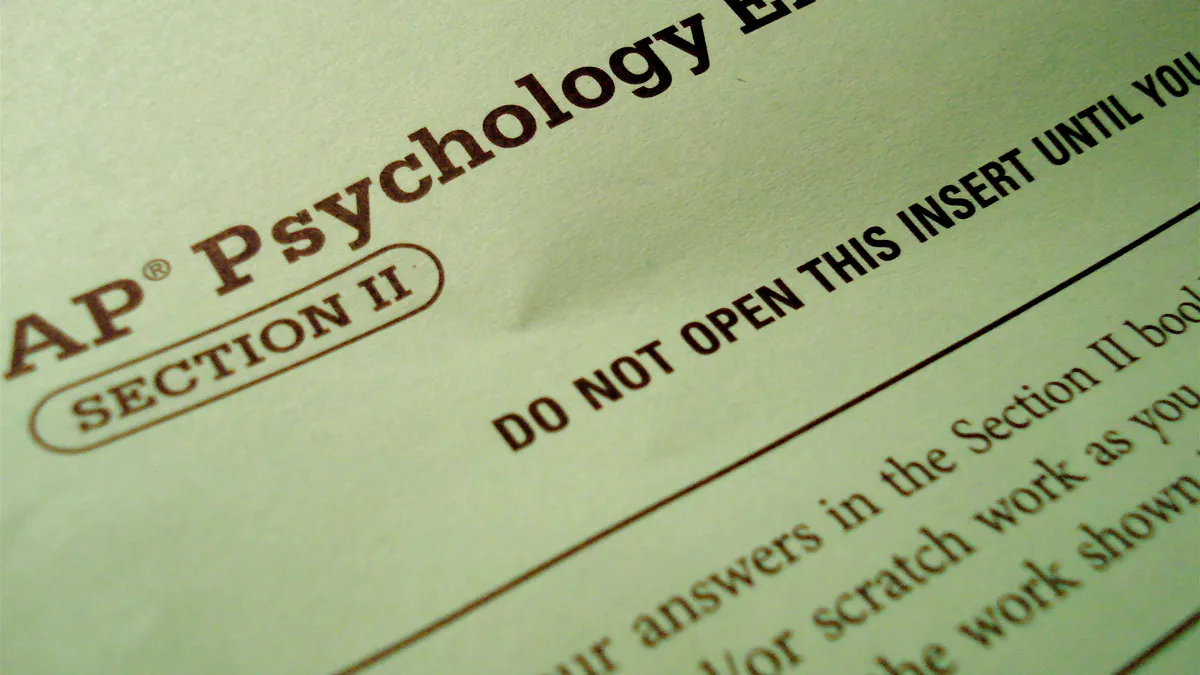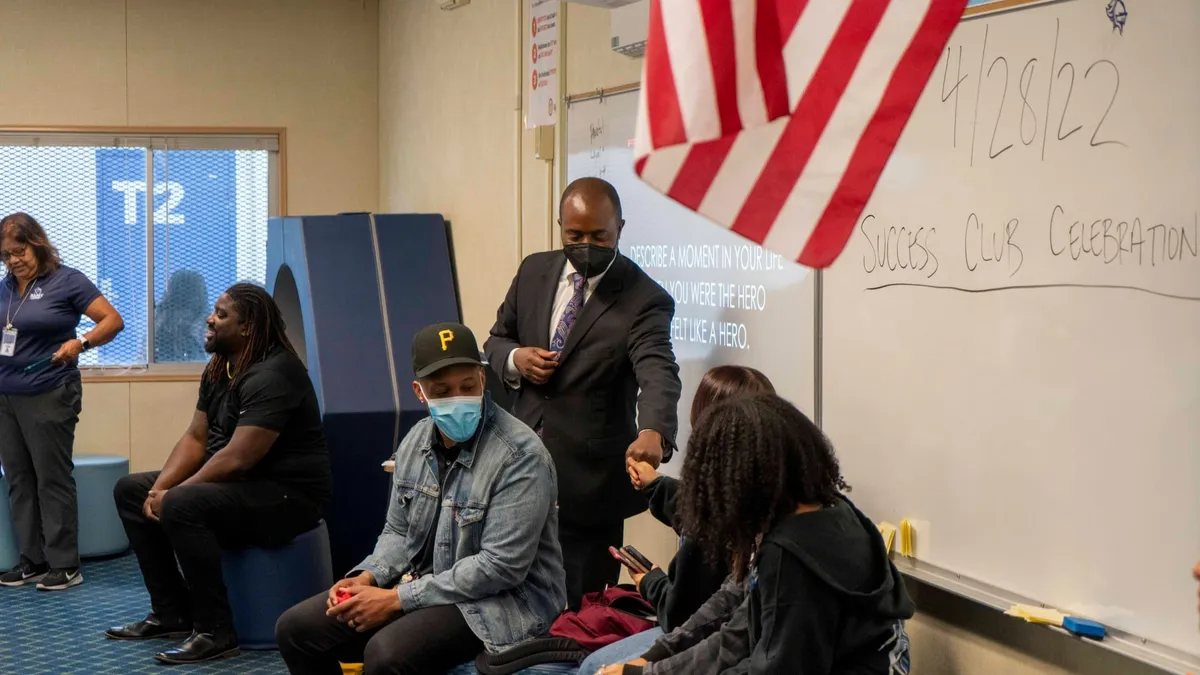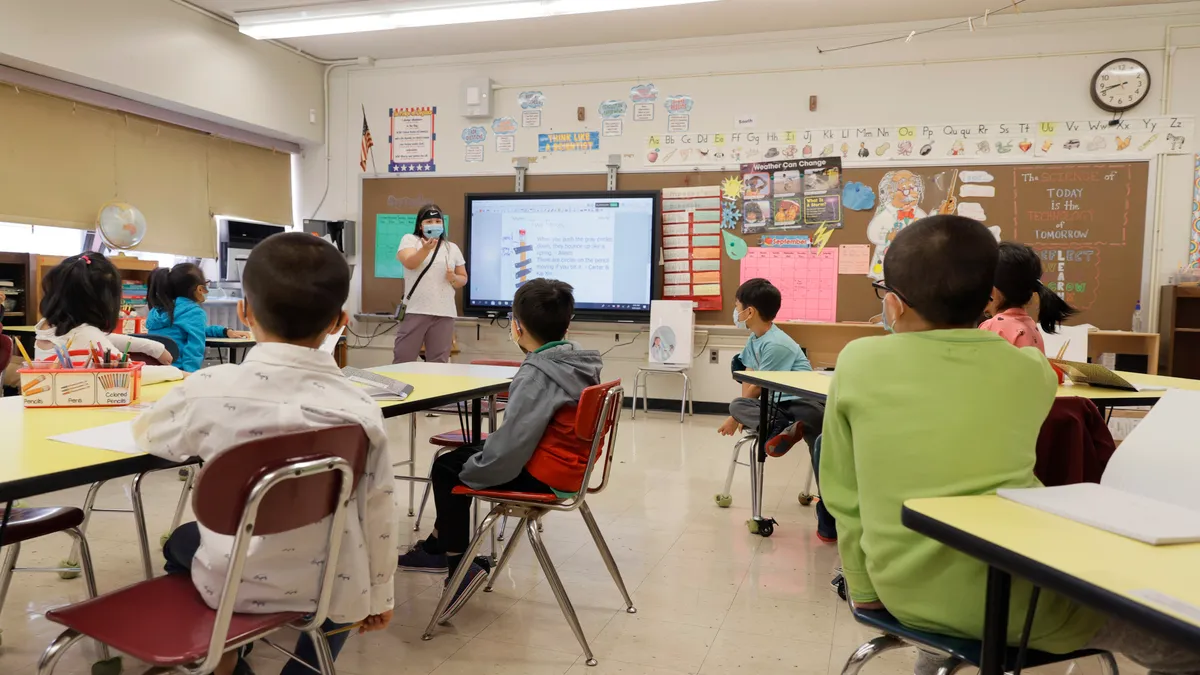Research shows that an effective teacher can have a tremendous impact on a child’s learning. Therefore, to truly improve education, it is vital to focus on the classroom teacher.
In West Aurora School District 129, we knew we needed to improve our professional learning program. In student achievement, our district ranked in the bottom 25% of Illinois districts. Sixty-seven percent of our students are economically disadvantaged, and many require additional programs, resources, and support. Our community had experienced a large influx of immigrants, and many of these children had no formal education. Our schools were serving a growing number of English language learners (ELLs) and students with disabilities. At the same time, we were losing teachers certified to teach English as a Second Language (ESL) and special education. In addition, statewide curriculum changes demanded that teachers have more specific certifications, exacerbating the teacher shortage.
Our challenge: How do we find good teachers and make them great? Here are a few steps we have taken to rebuild our professional learning program to better support our teachers and students.
Create your own university
When I arrived in West Aurora in 2014, it quickly became apparent that the district had spent millions of dollars on professional development but had received little return on that investment. So, we decided to stop hiring external experts and instead focus on treating our own educators like the experts they are.
Our power as educators lies in our ability to learn from one another. We need opportunities to dialogue, learn, share, and problem-solve. Yet, throughout my career, too many conversations have started with educators expressing feelings of isolation and helplessness because of limited opportunities to engage in meaningful conversation. To change this, we developed an internal professional development system called West Aurora University.
West Aurora University allows our staff to shift their professional learning from passive to active learning, which is the same type of learning we expect within our classrooms. Created with diverse needs in mind, it offers learning through at-large courses, cohort models, induction programs, and teacher leadership through micro-credentialing. Overall, West Aurora University is an investment in our professional teaching staff, and we encourage them to participate by granting certification clock hours, internal and external graduate credit, and professional learning stipends.
Host a professional learning day
Each February, we host a “Power of You” day. It opens with 1,200 employees sitting in West Aurora High School’s auditorium, listening to their peers and a student give “West Talks” about their education beliefs and what motivates and inspires them. After that, educators attend workshops — 90% of which are led by our staff. They can choose from more than 50 topics, ranging from effective technology integration to social-emotional learning to minding your own well-being. Staff surveys show overwhelmingly positive feedback from this event. In particular, staff members appreciate being given time to collaborate while focusing on their specific needs.
Offer courses after school
West Aurora University also offers after-school workshops known as at-large courses. These courses are designed to enhance instructional classroom practices. We then provide instructional coaching to reinforce these concepts within the classroom.
Invest in teachers who stay
When we looked at our shortage of ESL and special education teachers, we saw that the district had invested in plenty of professional development. However, after earning their certification, several teachers had left to teach in other districts. To ensure that our investment would benefit our students and schools, we restructured the way we reimburse teachers. Now, instead of having the district pay for a certification program, the teacher pays for it up front and then the district reimburses the teacher over the course of three years.
Implement cohort models for endorsements and certifications
To meet our students’ diverse needs and help teachers improve their practice, teachers can participate in cohorts to earn their ESL endorsement or become a National Board Certified Teacher (NBCT), for example. As cohort participants progress through their courses, which are taught by staff members, they build professional relationships. They can then turn to these networks for support, guidance, and best practices long after they earn their certification.
Create a teacher leadership program
To provide a consistent structure for developing and recognizing teacher leaders district-wide, we created a micro-credentialing program. Our program consists of seven areas in which a teacher can earn a credential. These areas are based on the needs of our district and schools, and are linked to the Charlotte Danielson clusters:
- Instructional Purpose – Cluster 1: Clarity of instructional purpose and accuracy of content
- Whole Child – Cluster 2: Safe, respectful, supportive, and challenging learning environment
- Induction – Cluster 3: Classroom management (targeting new teachers)
- Instructional Practice – Cluster 4: Student intellectual engagement
- Technology – Cluster 4: Student intellectual engagement
- Assessment – Cluster 5: Successful learning by all students
- Grading Practices – Cluster 5: Successful learning by all students
Each credentialed area is broken down into five specific standards called Essential Learning Outcomes (ELOs). The ELOs are organized into a sequence of 15 courses that an educator must take to earn the credential. These courses are further broken down into 100-, 200-, and 300-level courses, which are all taught by in-house experts and staff. The capstone of this course sequence is an action research project and core competency seminar that shifts a participant’s thinking from personal expertise to teacher leader.
Use data to identify needs and take action
To identify the needs of individual educators and the district as a whole, we examine a variety of data — from demographic and student achievement data to walk-through and evaluation data. Technology has been a big help in this area. We use an integrated, online system for evaluations, observations, and professional development management called the Performance Matters Growth Platform. This allows us to use evidence collected during the evaluation or observation process to drive customized professional learning plans. Individual educators can also search or sign up for professional development courses and track their progress in the same system.
We recently began using a new badging feature in the system to create, manage, and issue badges in our micro-credentialing program instead of tracking this information manually. This is not only helping us streamline the micro-credentialing process, but it is making our program more transparent and giving teachers an easy way to share an online record of their achievements.
Foster ongoing conversations and collaboration
Since its 2014 launch, West Aurora University has had more than 2,300 enrollments. We have had 1,060 micro-credentialing participants, 1,273 at-large course participants, 40 ESL endorsement cohort participants, and 40 NBCT cohort participants. That equates to more than 3,500 hours of professional learning focused on the needs of West Aurora’s professional staff.
Districts need structures that continually reinvest in professional learning. More importantly, we need to ensure these structures foster professional conversations and collaboration. Just as a teacher influences students, he or she can influence professional peers. We ask our teachers to inspire and encourage one another. We embrace the opportunity to challenge one another as we discuss the complexities of the profession. While this may or may not make teaching easier, it absolutely makes it more rewarding.
Brent Raby, Ed.D., is in his 15th year as an educator and currently serves as the assistant superintendent for teaching and learning for West Aurora School District 129 in Illinois.





 Dive Awards
Dive Awards













